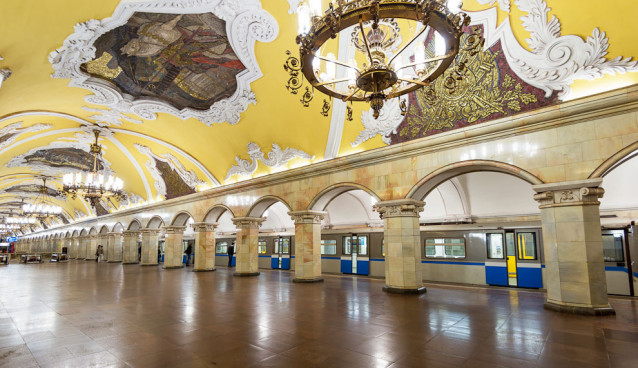The Moscow Underground is an essential part of life in the capital, and is the main pillar of the whole public transport system in the city. Moscow metro consists of 12 lines which total to 325,4 km in length, making our tube the 6th longest in the world (mic-ro.com)*. More then 10 thousand trains pass through 194 stations of metro daily. 44 of those stations are stated as Russia’s cultural heritage sites for their beauty and historical value. One will find lots of marble, high ceilings, chandeliers and stone ornaments in Moscow underground stations.
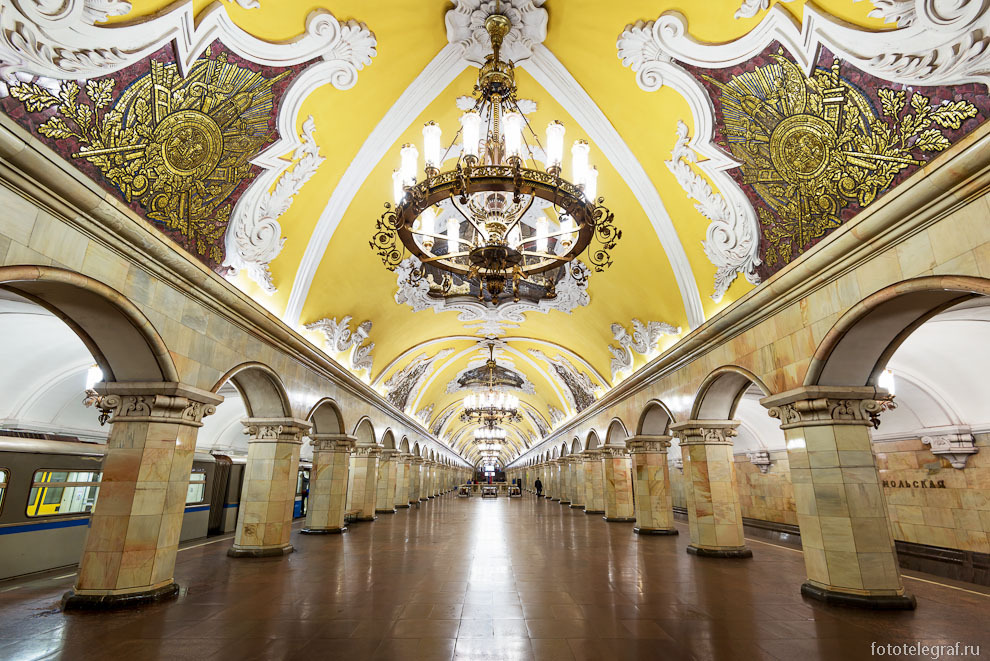
Komsomolskaya station. Photos by V. Lopatin from fototelegraf.ru
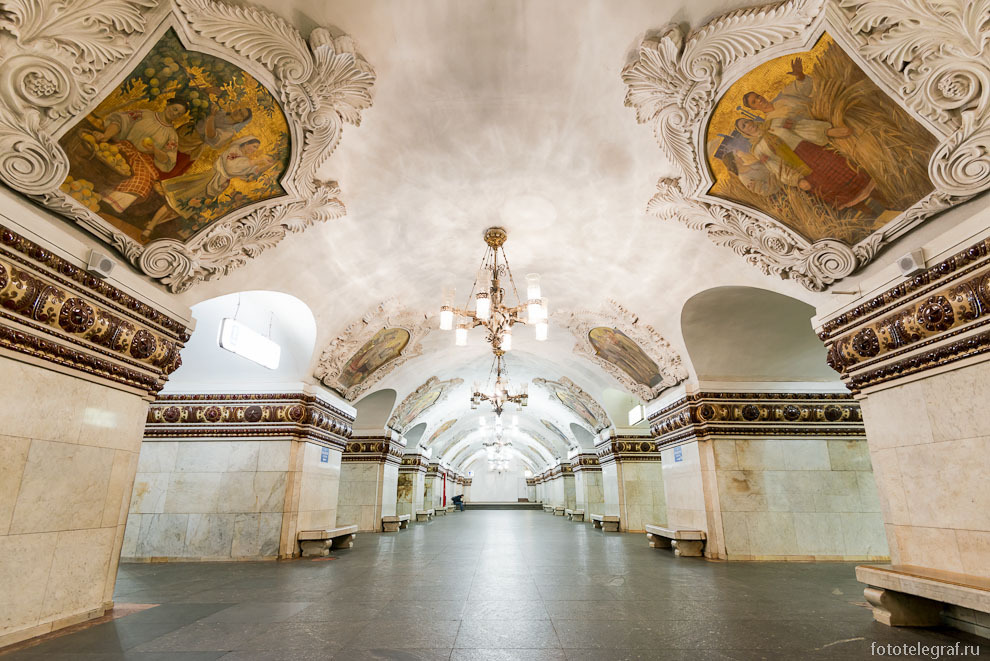
Kievskaya station. Photo by V.Lopatin from fototelegraf.ru
By 2020 Moscow government is planning to construct 62 more metro stations thus extending the length of the tube network to 462,4 km.
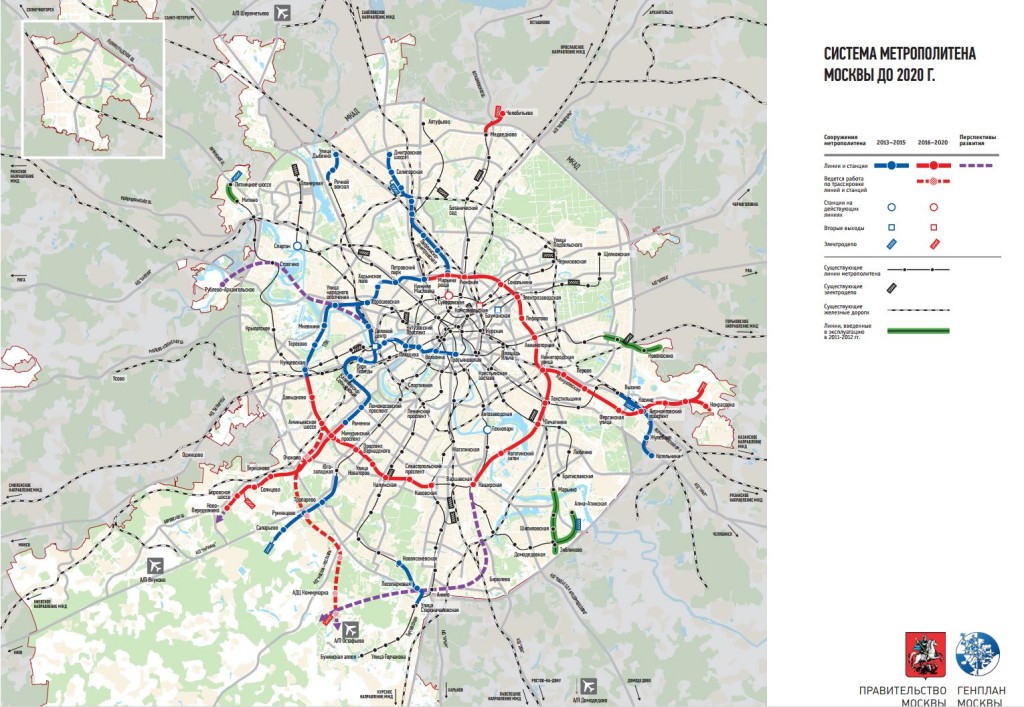
Map of the Development of Moscow Underground system upto 2020. stroi.mos.ru/metro
On average, Moscow Metro services 8 million passengers on a daily basis, which makes it’s share in Moscow’s public transportation system total to around 60% compared to other means of commute (mosmetro.ru).
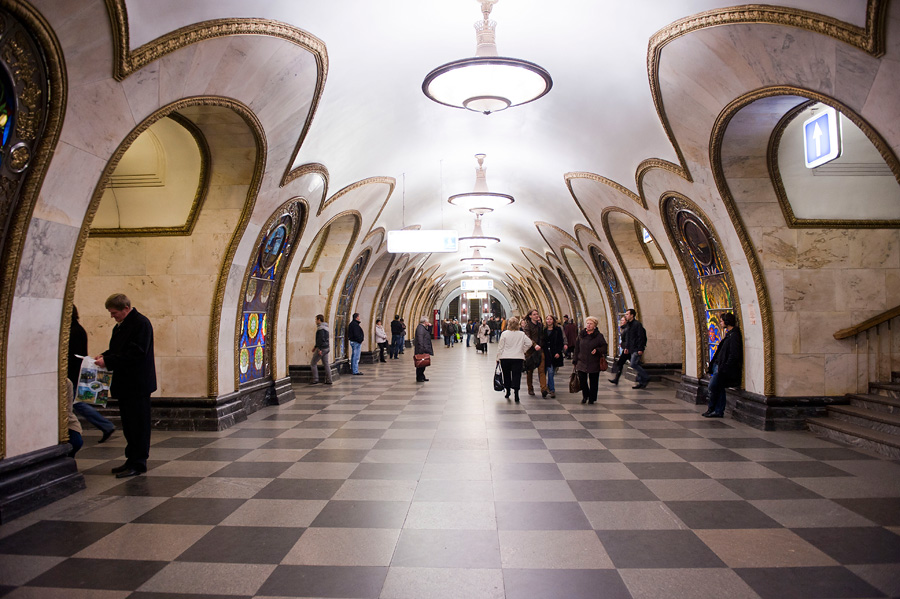
Novoslobodskaya station. Photo by Julia Sverchkova from redigo.ru
It’s hard to imagine that at the start of the XXth century (1902) , when certain engineers suggested to build an underground transport system, the local government declined it in favor of trams. Indeed trams in those days were very popular and contributed quite substantially into the city’s budget. Of course, if it wasn’t for the WWI and subsequent revolution, Tsarist Russia would definitely have embraced metro like other countries at that time did, as building plans for the tube were already in place… But it’s in the Soviet era when Moscow saw its first underground train system. By the end of 1920’s Moscow was coming to a transport collapse with existing tram networks.
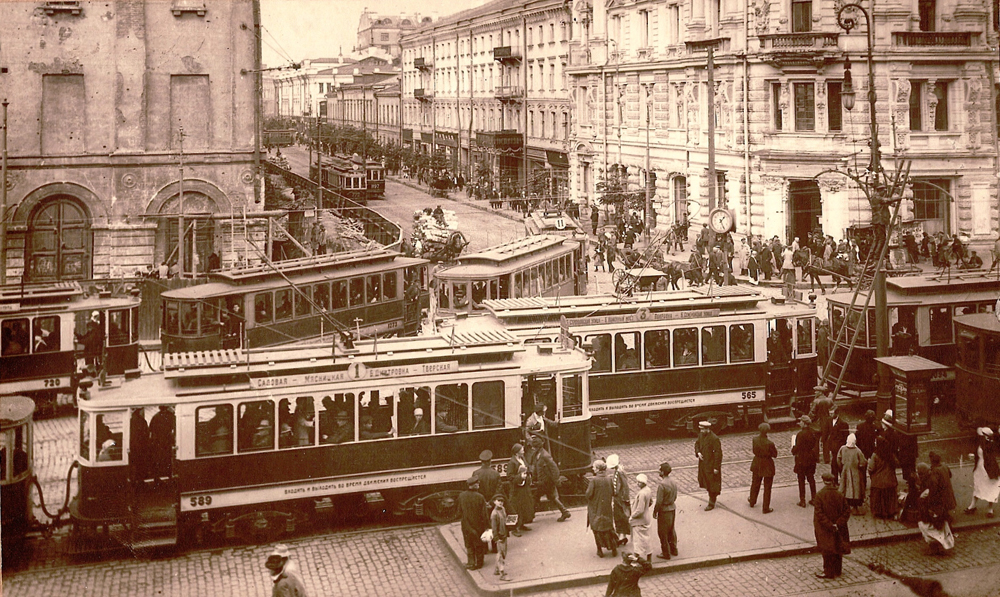
Transport collapse in the Moscow city centre. The need for underground trains was getting urgent.

Photo from moya-moskva.livejournal.com
First line of Moscow Metro was opened in May 1935 and stretched from the station ‘Sokolniki’ to ‘Park Kultury’ branching out to ‘Smolenskaya’. It was designed and constructed within 4 years! Later on, more lines and stations appeared connecting the city, and making metro the most popular transport in Moscow.
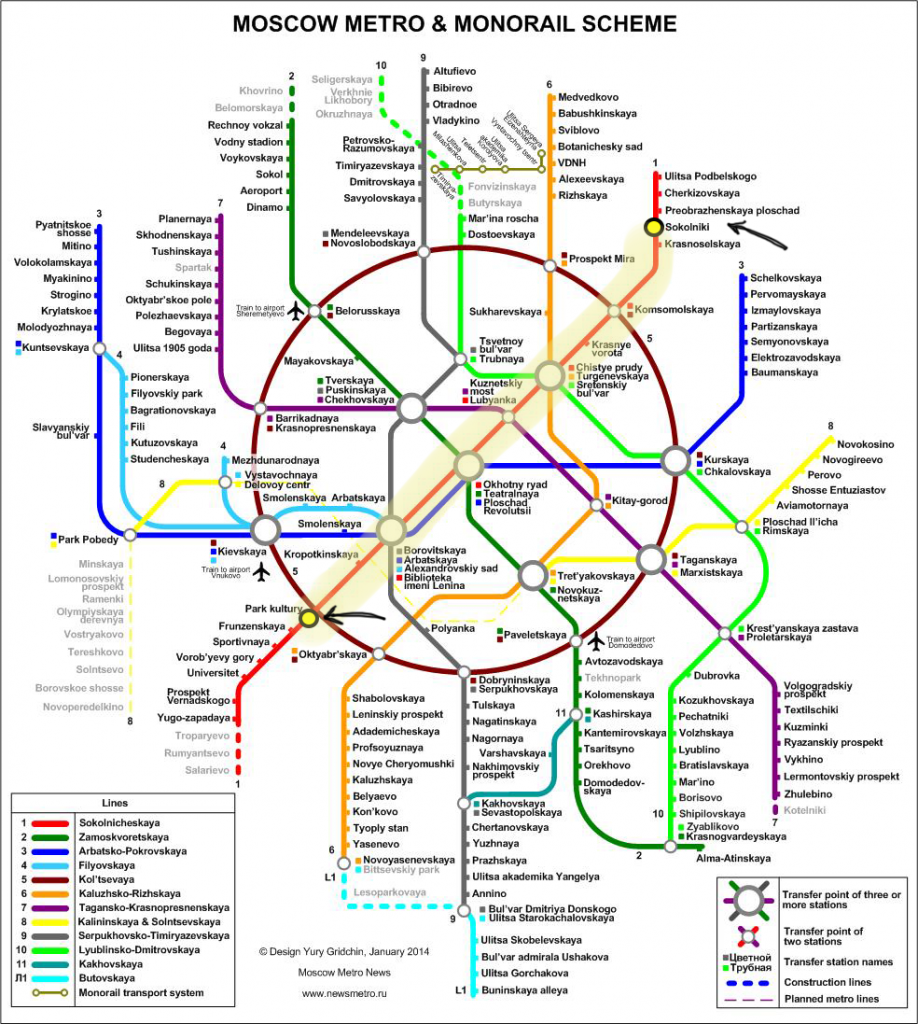
Here are a few interesting facts about Moscow Metro.
- If you are traveling towards the centre of the city or in a clockwise direction on a circle line (Koltsevaya), stations are announced by a male voice. On a way back from the centre and in an anti clockwise direction on Koltsevaya line you will be accompanied by a voice of a female announcer. This was done to help visually impaired passengers to navigate around the metro.
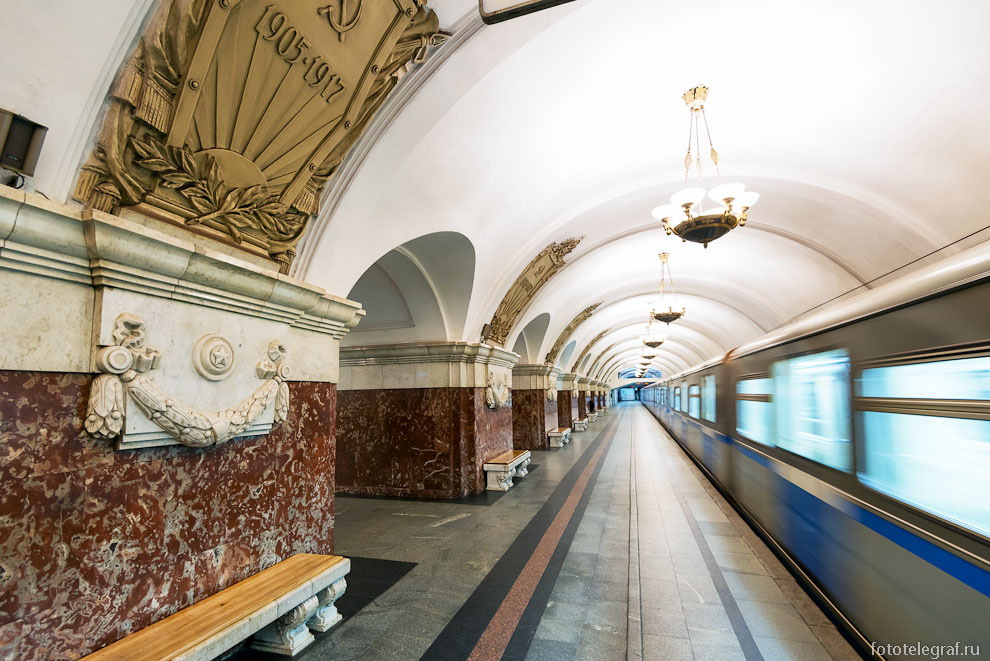
Krasnopresnenskaya station. Photo by V.Lopatin from fototelegraf.ru
- Outer design of more then 20 Moscow’s metro stations contain various fossils (mollusk shells, corals) that originated millions of years ago. Marble and other materials that are used in the design of a lot of stations come from all around the country: Altay, Ural, Kareliya, Baikal, and the rest of the Soviet Union: Ukraine, Armenia, Georgia and others.
Moscow Metro is a sort of a combination of a Paleontological and Geological museums. So take a closer look around next time you’re down in Moscow Underground.
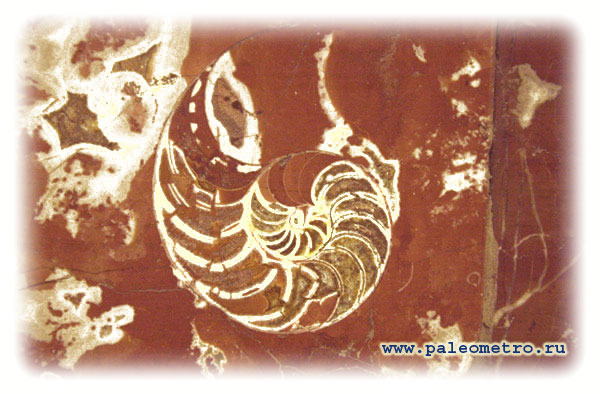
Nautilus shell

Shell of a Mollusc
Around 26 metro stations were renamed after the collapse of the Soviet Union as well as names of streets, squares and avenues around the city. Main reason for that was, of course, letting go of the Communist past. For instance, ‘Tverskaya’ used to be called ‘Gorkovskaya’, ‘Vorobyovy Gory’ were ‘Leninskie Gory’, and ‘Okhotny ryad’ where the Red Square is situated was called ‘Prospekt Marksa’ . You can see previous station names in old movies.
Supposedly there is a secret Underground system which is informally called Metro-2. It was started in the days of Joseph Stalin who wanted to have an opportunity to escape the city in case of any attack on the government or any other disturbances in Kremlin. “The length of Metro-2 is rumored to exceed that of the public Metro. It is said to have four lines, and to lie 50 to 200m deep. It is said to connect the Kremlin with the Federal Security Service (FSB) headquarters, the government airport at Vnukovo-2, and an underground town at Ramenki, in addition to other locations of national importance.”. Designed as an escape system Metro-2 offers only a way out of the city centre thus it’s one-way.
There are a lot of rumors and myths circulating about Moscow’s secret metro which made the public rather doubtful about its existence in general. But I believe it does exist as it’s hard to imagine that paranoid Stalin wouldn’t order something like that built… Also, my husband Peter saw a secret train line on blueprints of GUM department store located right on the Red Square while doing part-time photocopy work for a design agency in Manchester contracted to do GUM refurbishments.
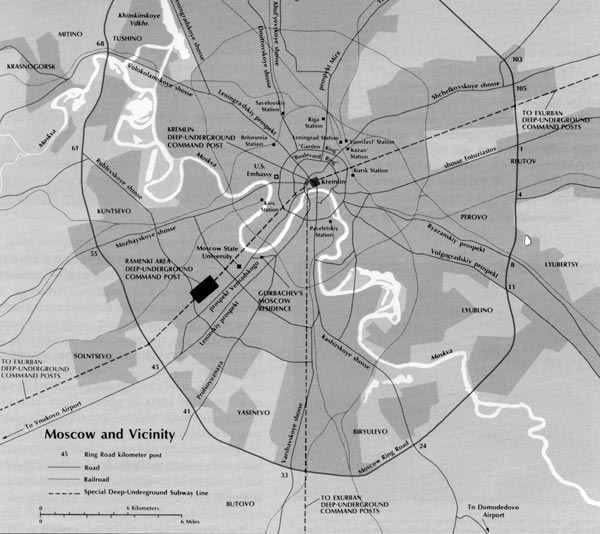
Alleged map of the Metro-2 from ‘Military forces in transition’. DOD. 1991
Moscow’s Metro (in my opinion) is truly one of the most convenient, easy-to-navigate and beautiful metros in the world! It is fascinating from a historical point of view, and is one of the most used underground systems in the world. If you are visiting Moscow, make sure you don’t miss out on the opportunity to see some of its most beautiful stations! But do make sure that you don’t commute during rush hours (7-10am, 5-7pm), otherwise the only thing you ‘ll enjoy is the site of a huge (often not very cheerful) crowd.
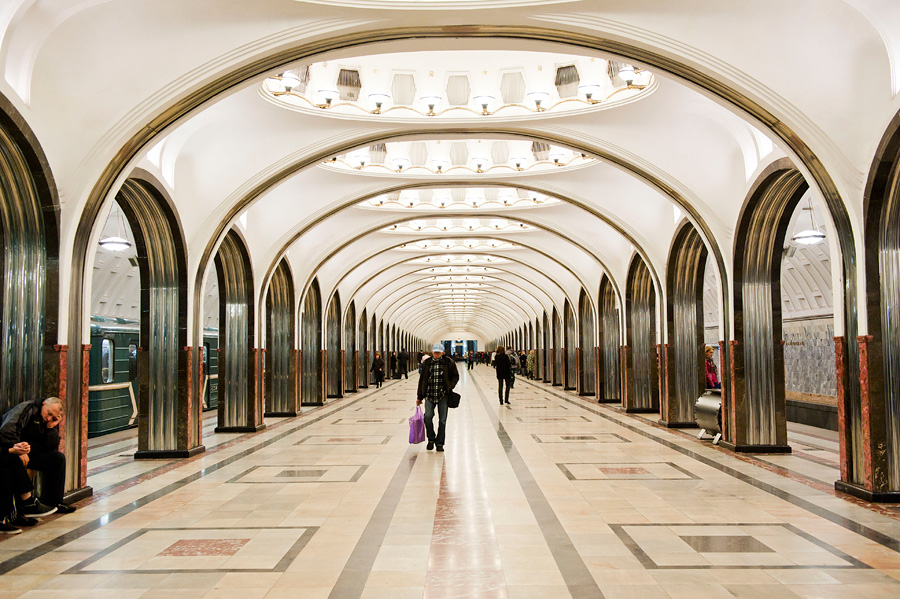
Mayakovskaya station
